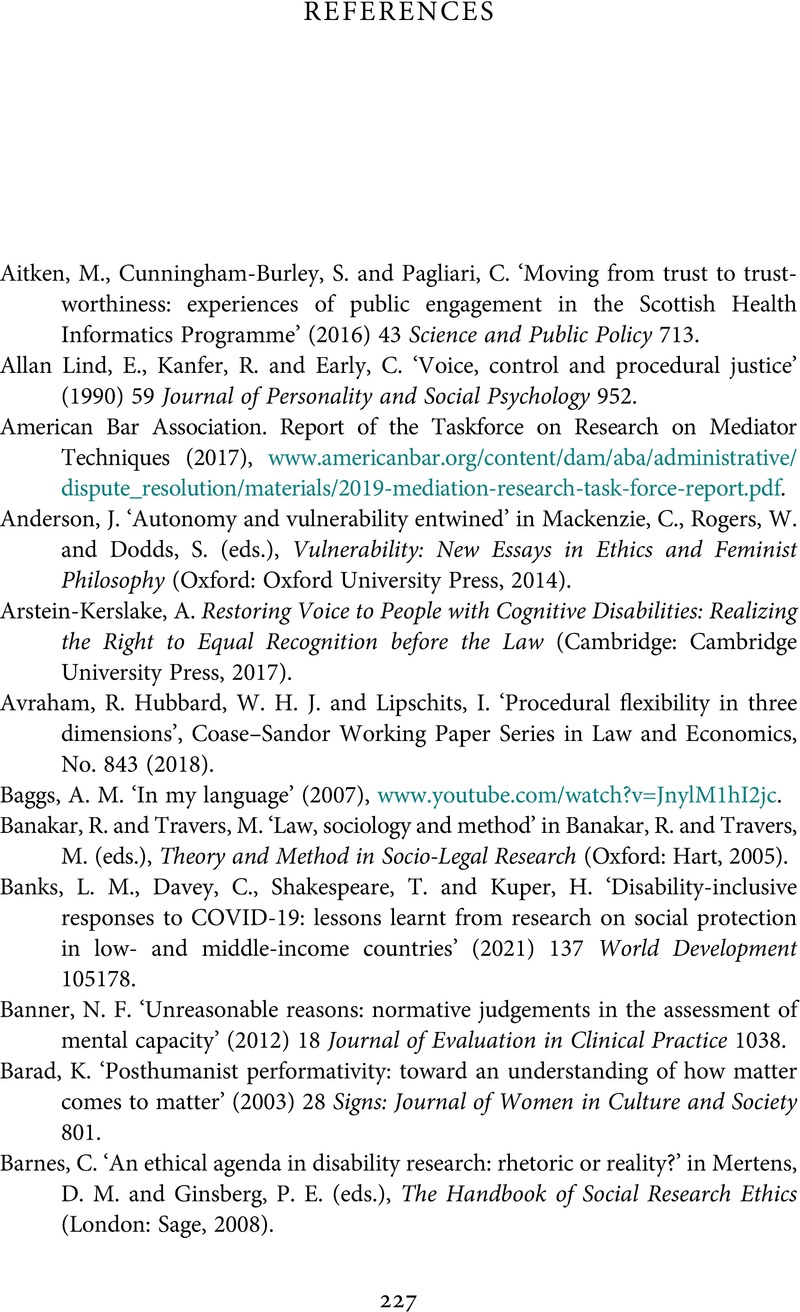Book contents
- Reimagining the Court of Protection
- Cambridge Bioethics and Law
- Reimagining the Court of Protection
- Copyright page
- Dedication
- Contents
- Figures
- Tables
- Acknowledgements
- Table of Statutes
- Table of Cases
- 1 Introduction
- 2 Procedural Justice
- 3 Participation and Voice
- 4 Mediating Disputes
- 5 Expert and Experiential Evidence
- 6 The Courtroom Space and Design
- 7 Conclusions
- References
- Index
- Books in the Series
- References
References
Published online by Cambridge University Press: 17 September 2022
- Reimagining the Court of Protection
- Cambridge Bioethics and Law
- Reimagining the Court of Protection
- Copyright page
- Dedication
- Contents
- Figures
- Tables
- Acknowledgements
- Table of Statutes
- Table of Cases
- 1 Introduction
- 2 Procedural Justice
- 3 Participation and Voice
- 4 Mediating Disputes
- 5 Expert and Experiential Evidence
- 6 The Courtroom Space and Design
- 7 Conclusions
- References
- Index
- Books in the Series
- References
Summary

- Type
- Chapter
- Information
- Reimagining the Court of ProtectionAccess to Justice in Mental Capacity Law, pp. 227 - 240Publisher: Cambridge University PressPrint publication year: 2022

